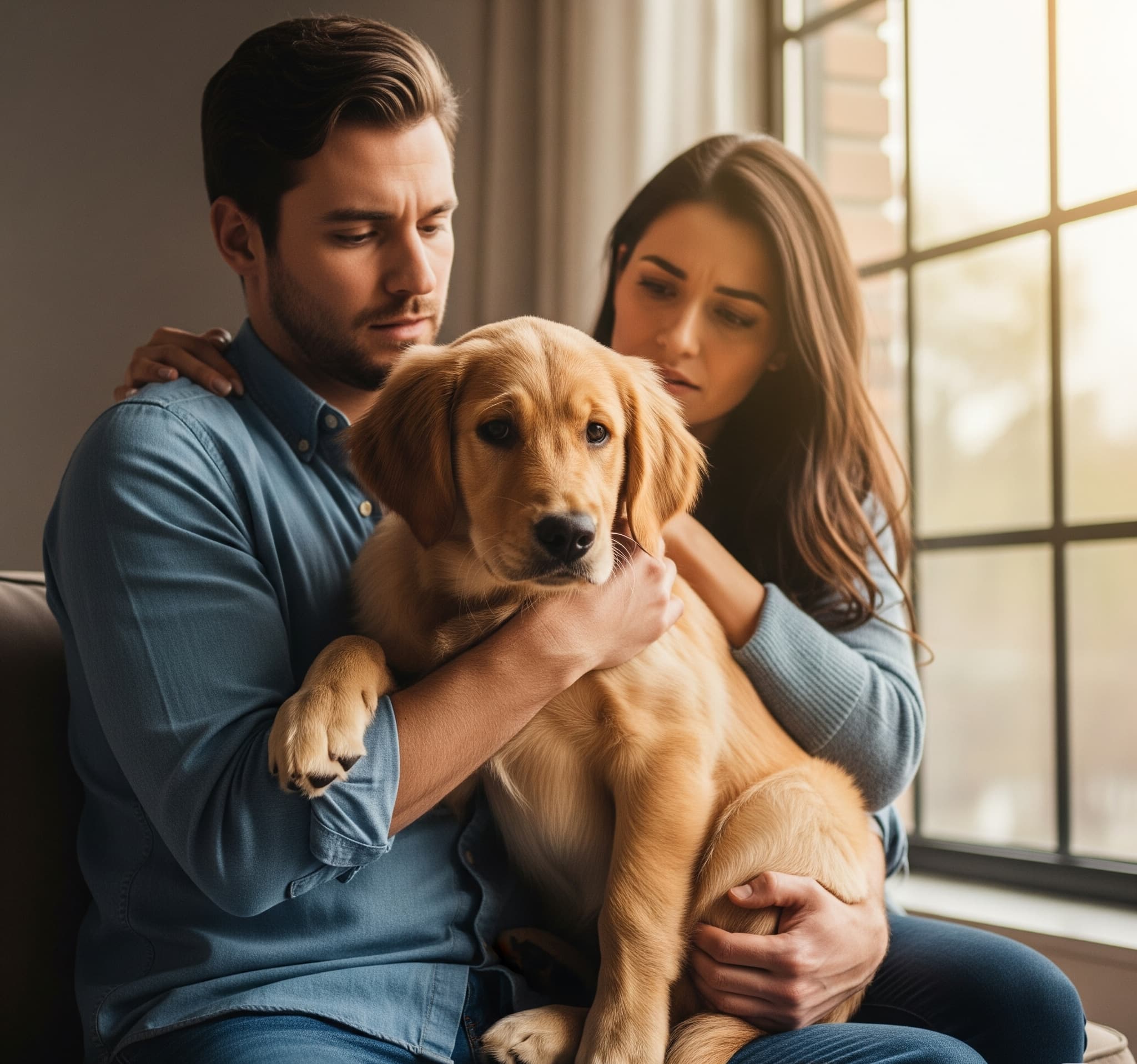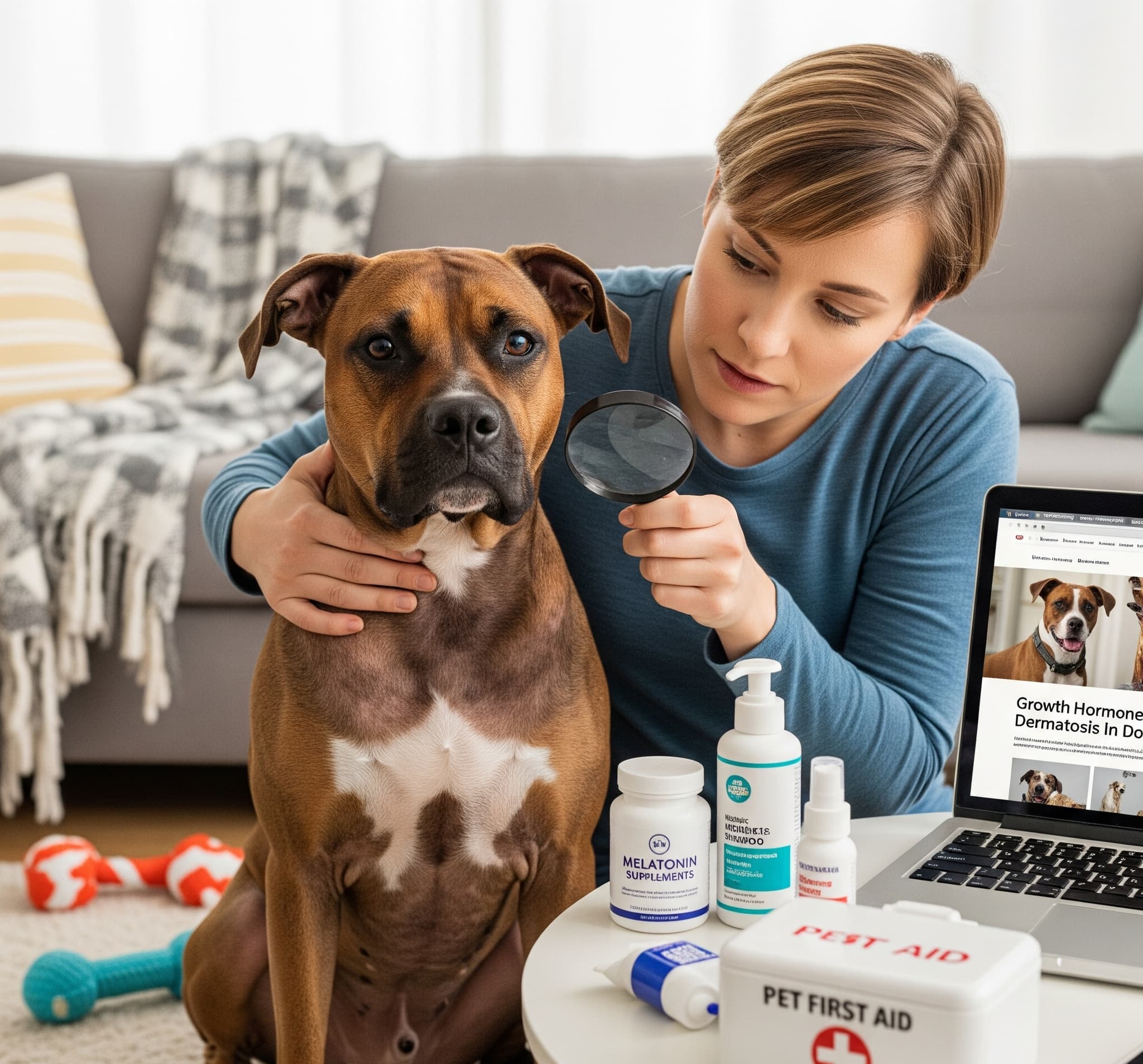First-Time Dog Parents: What You Need to Know About Canine Cancer
Essential guide for new dog owners about canine cancer signs, stages, and care options. Learn how to protect your furry friend with expert advice.
Introduction
Getting your first dog is one of life’s most joyful experiences. But as a new dog parent, you might feel overwhelmed by all the health concerns you need to watch for. One topic that many first-time owners worry about is canine cancer.
Cancer affects about 1 in 4 dogs during their lifetime. While this might sound scary, knowledge is your best tool. Understanding the basics of dog cancer can help you catch problems early and make the best choices for your furry friend.
To help you navigate this important topic, here are the key sections we’ll explore:
- Understanding Canine Cancer: The Basics Every New Owner Should Know
- Warning Signs You Should Never Ignore
- Different Types of Cancer and What They Mean
- Treatment Options: What to Expect and How to Decide
- Caring for Your Dog During Treatment and Beyond
Understanding Canine Cancer: The Basics Every New Owner Should Know
Cancer in dogs works much like it does in humans. It happens when cells in your dog’s body start growing out of control. These bad cells can form tumors or spread to other parts of the body.
The good news is that many dog cancers can be treated successfully, especially when caught early. Dogs can live happy, normal lives during and after treatment. Age plays a big role – older dogs get cancer more often than young ones. Most cases happen in dogs over 7 years old.
Some dog breeds have higher cancer risks than others. Golden Retrievers, Boxers, and German Shepherds tend to get cancer more often. But any dog can develop cancer, regardless of breed or size.
Your dog’s environment and lifestyle also matter. Dogs who eat healthy food, exercise regularly, and avoid harmful chemicals have better overall health. This doesn’t guarantee they won’t get cancer, but it helps their immune system stay strong.
Warning Signs You Should Never Ignore
As a new dog owner, you might wonder what normal behavior looks like versus warning signs. Here are the most important symptoms to watch for:
Physical Changes:
- Lumps or bumps that grow or change shape
- Sores that don’t heal within a few weeks
- Sudden weight loss without diet changes
- Swollen lymph nodes (small, round bumps under the jaw and legs)
Behavioral Changes:
- Loss of appetite lasting more than 2 days
- Difficulty eating or swallowing
- Trouble breathing or persistent coughing
- Limping that doesn’t improve with rest
Other Warning Signs:
- Bad breath that gets worse quickly
- Bleeding from the mouth, nose, or other body parts
- Difficulty going to the bathroom
- Extreme tiredness or weakness
Remember, these symptoms can also mean other health problems. Don’t panic if you notice one or two signs. But do call your vet right away. Early detection saves lives and often means easier treatment.
Different Types of Cancer and What They Mean
Dog cancer comes in many forms. Understanding the main types helps you know what questions to ask your vet.
Skin Cancer is the most common type in dogs. It often appears as unusual lumps or dark spots on the skin. Many skin cancers can be removed with surgery if caught early.
Lymphoma affects the lymph nodes and immune system. You might notice swollen glands under your dog’s jaw or legs. This cancer responds well to treatment in many cases.
Bone Cancer usually affects large breed dogs. The main sign is limping that doesn’t go away. While serious, pain management and treatment can help dogs stay comfortable.
Breast Cancer happens mostly in female dogs who weren’t spayed young. Regular check-ups help catch this early.
Internal Cancers affect organs like the liver, spleen, or intestines. These are harder to spot early, which is why regular vet visits are so important.
Each type of cancer behaves differently. Some grow slowly and respond well to treatment. Others are more aggressive but still treatable. Your vet will explain exactly what type your dog has and what it means for their future.
Treatment Options: What to Expect and How to Decide
Learning your dog has cancer feels overwhelming. But today’s treatment options give dogs much better outcomes than in the past.
Surgery is often the first choice for localized tumors. Many dogs do very well after surgery and return to normal activities quickly. Recovery usually takes 1-2 weeks.
Chemotherapy for dogs is different from human chemo. Dogs typically handle it much better with fewer side effects. Most dogs continue eating, playing, and enjoying life during treatment.
Radiation Therapy targets cancer cells with high-energy beams. It’s often used with surgery for the best results. Treatment sessions are quick and usually painless.
Immunotherapy helps your dog’s immune system fight cancer cells. This newer treatment shows great promise for certain cancer types.
Palliative Care focuses on comfort and quality of life. Sometimes this is the best choice for very sick dogs or those with advanced cancer.
The right treatment depends on many factors: your dog’s age, cancer type, overall health, and your family’s situation. Your vet will help you understand all options and make the best choice for your dog.
Cost is a real concern for many families. Pet insurance can help, but many policies don’t cover pre-existing conditions. Ask your vet about payment plans or look into organizations that help with pet cancer treatment costs.
Frequently Asked Questions (FAQ)
How long do dogs with cancer live?
This depends on the cancer type, stage, and treatment chosen. Some dogs live for years after diagnosis with good quality of life. Others might have months. Your vet can give you a better idea based on your dog’s specific situation. Remember that dogs live in the moment – they don’t worry about the future like humans do.
Will my dog suffer during treatment?
Modern veterinary medicine focuses heavily on keeping dogs comfortable. Most dogs handle cancer treatment much better than humans do. Your vet will monitor your dog closely and adjust treatment if needed. Pain management is always a priority.
Should I tell my children about the diagnosis?
Yes, but in an age-appropriate way. Children often sense when something is wrong. Explain that the dog is sick and the vet is helping them feel better. Focus on the love and care you’re providing. This can be a learning experience about compassion and dealing with difficult situations.
Can I prevent cancer in my dog?
While you can’t prevent all cancers, you can reduce risks. Feed high-quality food, maintain a healthy weight, exercise regularly, and avoid harmful chemicals. Spaying females before their first heat cycle greatly reduces breast cancer risk. Regular vet check-ups help catch problems early.
Is it worth treating an older dog?
Age alone shouldn’t determine treatment decisions. Many older dogs respond well to treatment and enjoy good quality of life. The key is looking at your dog’s overall health, not just their age. Discuss all options with your vet to make the best choice for your specific situation.
Conclusion
Being a first-time dog parent comes with many responsibilities, and understanding canine cancer is one of them. While the topic might feel scary, remember that knowledge empowers you to make the best decisions for your furry family member.
The most important things to remember are: watch for warning signs, maintain regular vet visits, and don’t hesitate to ask questions. Early detection makes a huge difference in treatment outcomes. Many dogs with cancer go on to live happy, fulfilling lives.
Your love and care mean everything to your dog. Whether you’re dealing with a diagnosis or just learning to be prepared, you’re already being a great dog parent by educating yourself.
Ready to be the best advocate for your dog’s health? Schedule a wellness check-up with your vet today and discuss any concerns you might have. Your dog depends on you to be their voice – and now you’re better prepared to speak up for them.




Post Comment